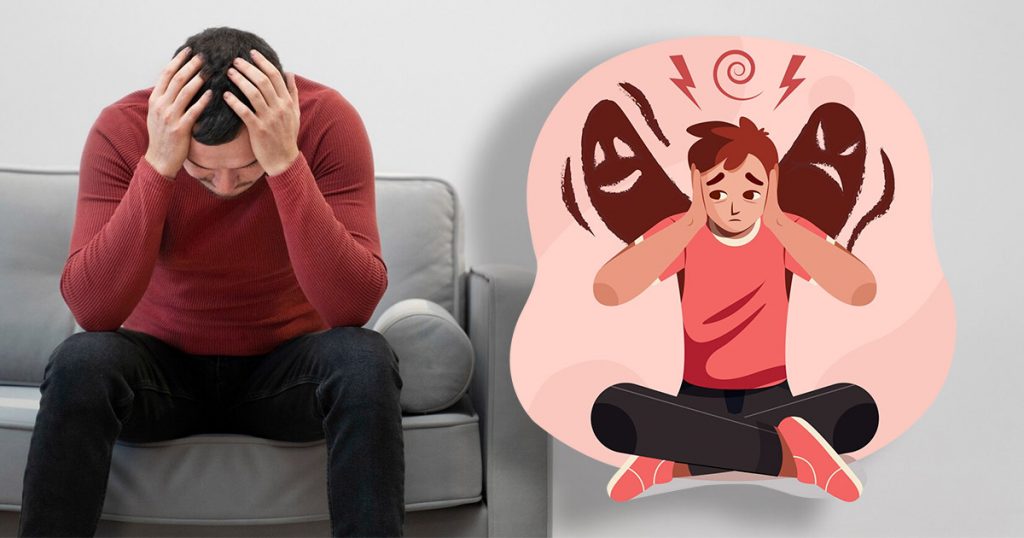Living with a mental health condition can be as challenging as dealing with a physical illness—it’s hard to control and often misunderstood. Just like people with physical health problems face difficulties, those with mental health disorders often struggle to manage their emotions. This highlights the urgent need for better understanding and support in both healthcare and society. According to the National Institute of Mental Health, about 1.4% of adults in the U.S. have Borderline Personality Disorder (BPD) each year, showing how common and important it is to address this issue.
This awareness is especially critical for people with BPD, a complex disorder marked by unstable moods, relationships, self-image, and behaviors.
What is Borderline Personality Disorder?
Borderline Personality Disorder (BPD) is a mental health condition that makes it hard for people to control their emotions, leading to unstable moods, self-image, and relationships. This emotional struggle often results in impulsive actions and intense feelings. BPD can show up in different ways, each with its own set of symptoms and behaviors.
1. Impulsive BPD
People with this type often act on a whim without thinking about the consequences, engaging in risky activities like binge eating, reckless driving, or abusing substances. In daily life, they might feel a strong urge to spend money on unnecessary items for quick excitement. Unlike self-destructive BPD, where actions are rooted in self-hatred, impulsive behaviors are driven by a need for thrill and avoiding boredom.
2. Discouraged BPD
Sometimes called “quiet BPD,” this type involves a deep fear of being left alone, leading to clinginess and a constant need for reassurance. They may appear calm but are often troubled inside, frequently seeking validation from others. For example, someone might always need to hear from a partner that they are loved, fearing they will be left if not constantly reassured. Unlike petulant BPD, where behaviors are more openly controlling, discouraged BPD involves inward self-blame.
3. Self-Destructive BPD
This type is marked by self-harming actions and persistent feelings of worthlessness. People might turn to cutting, substance abuse, or overeating to cope with their emotions. In everyday life, they might isolate themselves and use self-harm to manage intense feelings of sadness or anger. Unlike impulsive BPD, where actions are about seeking excitement, self-destructive behaviors are about self-punishment and emotional relief.
4. Petulant BP
Those with this type experience quick mood changes and can act in a passive-aggressive manner. They may feel unworthy and unloved, often trying to control relationships through manipulation. For instance, someone might be loving one moment but quickly become angry over small issues, using guilt to maintain control. Unlike discouraged BPD, which internalizes emotions, petulant BPD involves more outward displays of dissatisfaction and control-seeking.
Medical Management and Treatment Options for BPD
Helping people with Borderline Personality Disorder (BPD) through medical treatment is important for managing symptoms and improving their lives. Here are some treatment options:
Dialectical Behavior Therapy (DBT)
This therapy is very effective for BPD. It teaches skills like managing emotions, handling stress, improving relationships, and staying present in the moment.
Cognitive Behavioral Therapy (CBT)
CBT helps change negative thinking patterns and behaviors. It helps individuals with BPD see things more clearly and respond in healthier ways.
Medications
Although no specific drug is approved just for BPD, some medications can help with symptoms like depression and anxiety. Doctors might prescribe antidepressants, mood stabilizers, or antipsychotics to help manage these issues.
Schema-Focused Therapy
This therapy helps people recognize and change deep-seated patterns in their thoughts and behaviors that contribute to BPD symptoms.
Mentalization-Based Therapy (MBT)
MBT helps individuals understand their own and others’ feelings and thoughts better, which can improve how they react emotionally and socially.
Lifestyle Changes
Healthy habits can make a big difference. Regular exercise, eating well, getting enough sleep, and using stress-reduction techniques like yoga or meditation can all help with managing BPD symptoms.
Support Groups and Peer Support
Joining support groups can provide comfort and practical advice. Sharing experiences with others who understand BPD can be very helpful.
Family Therapy
Involving family in therapy can improve communication and understanding. It helps families learn how to support their loved one in a way that makes a positive difference.
Can Someone Have All Four Types of BPD at Once?
Borderline Personality Disorder (BPD) is a complex condition that requires understanding and compassion. In our discussion, we’ve highlighted the importance of recognizing the different types of BPD and how personalized treatments can improve lives.
Many wonder if someone can have all four types of BPD simultaneously. While it’s possible for a person to show traits from several types, having all four fully is uncommon. Each person’s experience with BPD is unique, involving a mix of symptoms that need a personalized treatment approach.
The road to effectively managing BPD involves working closely with mental health professionals to tailor strategies that fit individual needs. Using a mix of therapy, medication, lifestyle changes, and support can lead to better symptom control and a more fulfilling life. Staying hopeful and committed is key, as positive change is achievable.

